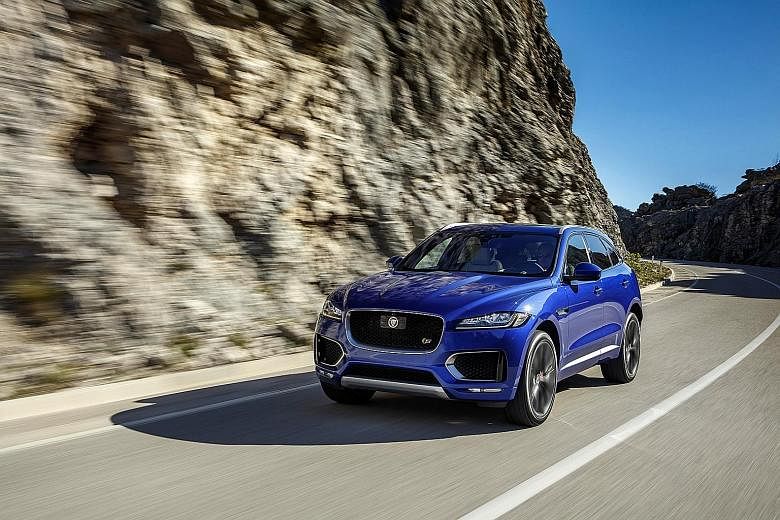After 95 years, Jaguar appears to have finally found its footing.
The British brand's sinuous early models - as sexy as anything on wheels at the time - had a reputation for being unreliable. More recently, Jags were tainted by Ford Motor Co and a quest for corporate synergies (read: parts-swopping).
These days, however, as Ford makes plans to idle factories, Jaguar cannot seem to make vehicles fast enough. With a tide of capital from parent Tata Motors and a fully overhauled product line, Jaguar is even nipping at the heels of mighty Porsche when it comes to sales in the United States.
In the first four months of the year, American drivers rolled out of dealerships with 14,606 Jags, more than double the number purchased in the same period last year.
The difference has been a new Jaguar SUV, the athletic F-Pace, and a starter sports sedan, the XE - neither of which were available early last year.
The F-Pace outsold Porsche's Cayenne this year to date and closely trailed the German brand's smaller SUV, the Macan.
All is not good news though in the big cat's race to catch Porsche: Jaguar's stunning sports car, the F-Type, is doing only half the business of the storied 911.
However, Volkswagen, Porsche's parent, is probably not too concerned about its crown jewel getting dinged. Porsche sales have increased slightly in the first four months of the year and continue to spin off some of the best profit metrics in the business. Sliding into a bare-bones 911 still requires at least US$91,100 (S$128,304) - about US$30,000 more than the starting sticker on an F-Type.
If any sleep is being lost in Germany, it is likely at Mercedes headquarters or down the autobahn at BMW. Those companies are far larger and far more reliant on volume.
The auto industry is undoubtedly cooling: US sales have declined for four consecutive months as demand wanes and financing tightens up.
But like an overheated engine, it is not cooling uniformly. Lincoln, for example, managed a 6 per cent sales gain in the first four months of the year. GMC, the upscale truck division of General Motors Co, is up 7.3 per cent and Volkswagen's Audi posted a 7.7 per cent increase in that period.
But as Ford and Chevrolet draw up plans to idle plants this summer, Jaguar and Porsche continue to accelerate.
These winning brands have a few things in common. All of them are selling sharp, new SUVs and all of them luxury or what auto-executives call "near luxury".
The people kicking the tyres on a US$45,000 GMC Acadia Denali are more likely to have a different economic situation than those testing the US$29,000 Chevrolet Traverse. Financing for GMC faithful is probably less of a stretch.
Finally, these vehicles are still not ubiquitous on US roads. The downside to a car-buying frenzy like the one America has seen over the past few years is ubiquity.
A customer who does not want to be common can no longer turn to Jeep or even Mercedes. A Jaguar, however, is still tough to spot in the wild - at least for now.
BLOOMBERG

